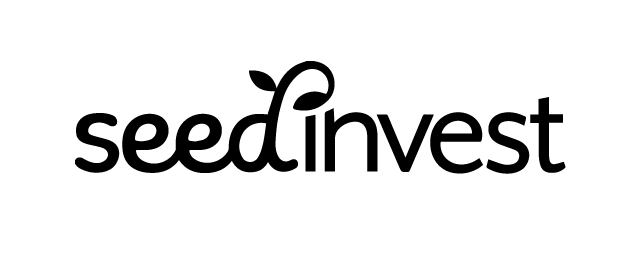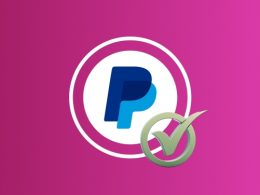Starting a business is a dream shared by many, offering the promise of financial independence, creative freedom, and the opportunity to bring your ideas to life. However, the misconception that you need a substantial amount of capital to start a business often deters aspiring entrepreneurs.
This article will debunk common myths and provide practical guidance on how to overcome the financial barriers to entrepreneurship.
Common myths about starting a business with a shoestring budget
One of the common misconceptions about entrepreneurship is that you need a large sum of money to get started. This belief can discourage many potential business owners before they even begin. In reality, it’s possible to launch a successful business with little to no money if you approach it with the right mindset and strategies. Starting a business with no money requires a combination of creativity, resourcefulness, and determination.
While financial resources can certainly make the journey easier, they’re not the only path to success. By harnessing your skills, network, and innovative thinking, you can lay the foundation for a thriving business.
Identifying your business idea
Assessing your skills and interests
To start a business with no money, begin by assessing your own skills, passions, and areas of expertise. What are you good at? What do you enjoy doing? Identifying your strengths and interests will help you come up with a business idea that aligns with your abilities and passion, increasing your chances of success.
Identifying a profitable niche to start a business with little or no cash
Once you’ve identified your skills and interests, research potential niches within your chosen field. Look for gaps in the market where you can offer something unique or cater to an underserved audience. A niche focus can help you stand out and build a dedicated customer base.
Check out this selection of articles on the best products to sell on Amazon, Shopify and eBay.
Conducting market research to validate your idea
Market research is crucial to determine if there’s demand for your product or service. Even without a budget for extensive research, you can use free online tools and social media to gather information about your target audience and competition. Validating your business idea early on can save you time and effort in the long run.
Developing a solid business plan
The significance of a well-structured business plan
A business plan is your roadmap to success. It depicts your business goal, major marketing, financial and other strategies, and projections. Even without money, a well-structured plan can guide your actions and help you secure funding or partnerships down the line.
Setting clear goals and objectives
Identify clear short-term and long-term goals for your business. Having specific objectives in mind will keep you focused and motivated, even when facing financial constraints.
Crafting a detailed marketing strategy
Your marketing strategy should be cost-effective and tailored to your target audience. Explore free or low-cost marketing channels such as social media, email marketing, and content creation to promote your business effectively.
Outlining your revenue model
Describe how your business will make money. Will you sell products or services? Will you rely on advertising, subscriptions, or affiliate marketing? A well-defined revenue model is essential for sustainability.
Leveraging your skills and network
Utilizing your existing skills and expertise
Your existing skills and expertise are valuable assets. Consider how you can leverage them to create products or offer services. This not only reduces the need for external resources but also allows you to provide high-quality offerings based on your knowledge.
Tapping into your personal and professional network
Your network can be a source of support, collaboration, and even initial customers. Reach out to friends, family, colleagues, and acquaintances who may be interested in your business or know someone who is. Networking can open doors to opportunities you might not have discovered otherwise.
Seeking partnerships and collaborations
Collaborating with others can provide access to resources and expertise you may lack. Look for complementary businesses or individuals with whom you can partner. This can lead to shared costs, shared marketing efforts, and mutual growth.
Bootstrapping your business
DIY approach to business operations
To minimize expenses, adopt a do-it-yourself (DIY) approach whenever possible. This includes building a basic website using free website builders, creating essential marketing materials using design tools, and utilizing free or low-cost software and tools for tasks like accounting and project management.
Managing your finances wisely
Effective financial management is critical when starting a business with no money. Create a budget, monitor your expenses closely, and prioritize spending on essentials. Seek ways to cut costs without compromising the quality of your products or services.
To manage your finances wisely, leverage Synder, a top-notch software connecting payment platforms and sales channels to the books. Enjoy a seamless reconciliation and stress-free tax season! Sign up for a 15-day free trial with no commitment or spare a seat at the Weekly Public Demo to get all your questions answered by Synder’s professionals.
Managing cash flow effectively
Cash flow management is key to survival. Invoice promptly, offer incentives for early payments, and consider creative payment arrangements when dealing with clients or suppliers. Keep a close eye on your cash flow to ensure you can cover your operating expenses.
Getting a business loan: Funding sources
Getting a business loan when you have little to no money can be challenging, but it’s not impossible. Lenders typically prefer to see a solid financial foundation before approving a loan, but there are still options available. Here’s a step-by-step guide on how to increase your chances of getting a business loan with limited resources:
- Understand your needs: Determine how much capital you need and what you will use it for. Having a clear business plan and financial projections will help you calculate your loan amount accurately.
- Build your credit score: Our personal and business credit scores play a significant role in loan approval. Even if you have limited financial resources, work on improving your credit score by paying bills on time and reducing outstanding debts.
- Explore microloans: Microloans are small loans designed for startups and businesses with limited resources. Organizations like nonprofit lenders, community development financial institutions (CDFIs), and the Small Business Administration (SBA) offer microloan programs.
- Seek collateral or a co-signer: If you have limited assets or a low credit score, offering collateral or having a co-signer with a strong credit history can increase your chances of loan approval. Collateral could be personal assets or business assets, depending on the lender’s requirements.
- Build a strong business network: Connect with potential investors, mentors, and advisors who can vouch for your business idea and credibility. Having a supportive network can help you find lending opportunities.
- Prepare a detailed loan application: Complete the loan application meticulously, providing all required documentation, such as financial statements, tax returns, and business plans. A well-prepared application shows professionalism and increases your chances of approval.
- Demonstrate your commitment: Lenders want to see that you’re committed to your business. Be prepared to invest your time and energy into the venture, which can give lenders confidence in your ability to repay the loan.
Crowdfunding platforms
Crowdfunding platforms are online platforms that allow individuals, businesses, and organizations to raise money from a large number of people, typically in the form of small contributions or investments. These platforms have gained popularity as an alternative way to fund various projects, business ventures, and creative endeavors. Here are some well-known crowdfunding platforms:
- Kickstarter

Kickstarter is probably one of the best known and popular platforms used for crowdfunding. It allows creators to raise funds for things like art, music, film, technology, and more. Backers (contributors) pledge money in exchange for rewards or products related to the project.
- Indiegogo

Indiegogo is a versatile crowdfunding platform that caters to a wide range of project types, including creative endeavors, tech startups, and charitable causes. It offers both fixed and flexible funding options, allowing creators to choose whether they want to keep all funds raised or only if they meet their fundraising goal.
- GoFundMe

GoFundMe is primarily used for personal fundraising and charitable causes. It’s commonly used for medical expenses, educational needs, emergencies, and community support. Users can create campaigns and share them with their networks to seek donations.
- Patreon

Patreon is a platform for artists, creators, and content producers to receive ongoing support from their fans and supporters. Subscribers, often referred to as “patrons,” pledge a recurring amount to support the creator’s work, whether it’s music, art, videos, or other content.
- Crowdfunder

Crowdfunder is geared towards entrepreneurs and businesses looking to raise equity or investment-based capital. It connects startups with investors who are interested in equity crowdfunding, providing a platform for early-stage funding.
- SeedInvest

SeedInvest is another equity crowdfunding platform, primarily focused on startups. It allows accredited investors to invest in a variety of early-stage companies. Startups can raise capital through equity offerings, making it a valuable resource for entrepreneurs.
- Kiva

Kiva is a micro-lending platform that enables individuals to provide small loans to entrepreneurs and small businesses in developing countries. Users can contribute as little as $25 to help fund loans that support economic development and alleviate poverty.
- Fundable

Fundable is a crowdfunding platform designed for both reward-based and equity-based fundraising. It primarily serves startups and small businesses looking to raise capital. It offers tools for campaign creation, investor management, and more.
- RocketHub

RocketHub is a crowdfunding platform focused on creative projects, entrepreneurship, and philanthropy. It offers a range of funding models, including rewards-based and equity-based crowdfunding, to support various project types.
- Crowdcube

Crowdcube is a UK-based equity crowdfunding platform that connects investors with early-stage businesses seeking funding. It allows investors to buy shares in startups and small businesses, helping them grow and expand.
Before choosing a crowdfunding platform, it’s essential to research each platform’s specific terms, fees, and audience to determine which one aligns best with your project or business funding needs. Additionally, be prepared to create a compelling campaign that effectively communicates your project’s purpose and benefits to potential backers or investors. Successful crowdfunding campaigns often involve thorough planning, engaging storytelling, and active promotion through social media and other channels.
Grants and competitions
Grants and competitions can be excellent sources of funding and support for aspiring entrepreneurs looking to start a business with limited or no money. These opportunities provide non-repayable funds, mentorship, and valuable networking opportunities. Here are some grants and competitions that can help you kickstart your business:
- Small Business Innovation Research (SBIR) and Small Business Technology Transfer (STTR) Programs: These U.S. government programs provide grants to small businesses, including startups, engaged in research and development. They fund projects that have the potential for commercialization and innovation.
- National Minority Supplier Development Council (NMSDC) Business Consortium Fund: This fund supports minority-owned businesses by providing grants to enhance their competitiveness and growth. It’s an excellent resource for minority entrepreneurs.
- Eileen Fisher Women-Owned Business Grant Program: This grant program is designed to support women-owned businesses in the fashion industry. It provides funding and mentorship to businesses that align with Eileen Fisher’s values.
- FedEx Small Business Grant Contest: FedEx offers an annual small business grant contest with substantial cash prizes for small businesses. It’s open to businesses across various industries.
- Chase for Business Mission Main Street Grants:JPMorgan Chase’s Mission Main Street Grants program provides grants to small businesses that demonstrate a commitment to their local communities. Winners receive financial support and mentorship.
- Cartier Women’s Initiative Awards:This international competition celebrates and supports female entrepreneurs worldwide. Winners receive funding, mentoring, and networking opportunities.
- Hult Prize:The Hult Prize is a global social entrepreneurship competition that challenges students and entrepreneurs to address critical global issues. Winners receive funding and support to implement their ideas.
- The African Innovation Foundation (AIF) Innovation Prize for Africa (IPA):IPA recognizes and supports innovations with the potential to create sustainable solutions to Africa’s challenges. Winners receive cash prizes and support for their innovations.
- Green Challenge: The Postcode Lottery Green Challenge is an annual competition for green and sustainable business ideas. It offers substantial cash prizes to the most innovative solutions.
- Global Student Entrepreneur Awards (GSEA): GSEA is a competition for student entrepreneurs worldwide. It offers a chance to win cash prizes, mentorship, and access to a global network of entrepreneurs and investors.
- National business plan competitions: Many universities and organizations host business plan competitions that provide funding and support to winning teams or entrepreneurs with promising business ideas.
- Local and regional grants and competitions: Check with local and regional governments, economic development agencies, and chambers of commerce for grants and competitions specific to your area. These opportunities may not always be widely publicized but can provide valuable support.
When applying for grants or participating in competitions, thoroughly review the eligibility criteria, deadlines, and submission requirements. Craft a compelling business plan or proposal that clearly communicates your idea, its potential impact, and how you intend to use the funds. Additionally, leverage your network to seek advice and recommendations, as well as to discover new opportunities for funding and support in your specific industry or region.
Bartering and trade
Bartering and trade can be effective strategies for starting a business with little to no money. Bartering involves exchanging goods or services with others without the use of cash, while trade involves the exchange of goods or services for something of value. Here are some ways to leverage bartering and trade to kickstart your business:
- Identify your offerings: Determine what goods or services your business can provide in exchange for what you need. This might include your skills, products you can create, or services you can offer.
- Barter with other businesses: Reach out to businesses that offer products or services you need and propose a barter arrangement. For example, if you’re starting a graphic design business, you could offer to create a website or design marketing materials in exchange for office space or legal services.
- Skill exchange: If you have a specific skill or expertise, consider offering it in exchange for something you need. For instance, if you’re a web developer, you can offer to build websites for other businesses in exchange for their products or services.
- Freelance services: Offer your freelance services to businesses or individuals in exchange for payment in kind. This can include writing, graphic design, marketing, or consulting services.
- Local business partnerships: Partner with local businesses to cross-promote each other’s products or services. This will assist you in reaching out to a broad audience without having to splash out on advertising.
- Barter exchanges: Join a barter exchange network or organization that facilitates barter transactions among businesses. These networks often have a digital currency system that allows businesses to trade without the need for a direct one-to-one exchange.
- Online barter platforms: Explore online barter platforms that connect individuals and businesses looking to trade goods or services. Websites like TradeAway, BarterQuest, and U-Exchange facilitate barter transactions.
- Trade associations: Consider joining trade associations related to your industry. These organizations often provide opportunities for members to exchange products or services and can help you establish valuable connections.
- Barter agreements: When entering into a barter arrangement, it’s essential to document the agreement clearly. Outline the goods or services exchanged, their value, and any terms and conditions to avoid misunderstandings.
- Volunteer opportunities: Offer your time and skills as a volunteer for organizations or events related to your industry. This not only helps you gain experience but can also lead to valuable connections and opportunities.
- Creative collaboration: Collaborate with other creatives or artists to create joint projects or exhibitions. By pooling your talents and resources, you can showcase your work and potentially generate income.
Remember that successful bartering and trade depend on clear communication, trust, and fairness. Be open to negotiation and flexible in finding mutually beneficial arrangements. While bartering and trade can help you get started, it’s essential to eventually generate revenue and manage your finances effectively as your business grows.
Angel investors and mentors
Angel investors and mentors can be valuable resources for aspiring entrepreneurs looking to start a business with limited funds. These individuals can provide not only financial support but also guidance, expertise, and connections that can significantly benefit your startup. After you identify your needs and goals and build a business plan, consider doing the following:
- Network actively: Attend industry events, workshops, seminars, and local business networking events to expand your professional network. Angel investors and mentors often attend these gatherings, making them ideal places to make connections.
- Leverage online platforms: Utilize online platforms and social media networks like LinkedIn to connect with potential mentors and investors. Join relevant groups and engage in discussions to establish your presence.
- Seek referrals: Ask your existing network, including friends, family, and professional contacts, if they know of any potential angel investors or mentors who might be interested in your business idea.
- Explore angel investor networks: Research local and regional angel investor networks or groups that focus on early-stage startups. These networks can introduce you to investors interested in supporting businesses in your area.
- Attend pitch events and competitions: Participate in pitch events and startup competitions where you can present your business idea to a panel of judges, including potential investors. These events often provide opportunities to connect with mentors as well.
- Join incubators and accelerators: Consider joining startup incubators or accelerators, which often provide access to mentors, advisors, and sometimes angel investors. These programs can help you refine your business and connect with the right people.
- Engage in advisory boards: Invite experienced individuals in your industry to join your advisory board. These advisors can provide guidance and potentially introduce you to angel investors.
- Craft a compelling pitch: Develop a concise and persuasive pitch that clearly communicates your business idea, its value proposition, and why you need support. Tailor your pitch to resonate with potential investors and mentors.
- Be open to equity investment: Some angel investors may be willing to provide funding in exchange for equity in your business. Get ready to discuss conditions that are fair and stick with your goals.
Keep in mind that building relationships with angel investors and mentors takes time and persistence. It’s essential to foster genuine connections and demonstrate your commitment to your business. Be receptive to feedback and continuously seek opportunities to learn and grow as an entrepreneur.
Embracing guerrilla marketing
Guerrilla marketing is a creative and unconventional approach to marketing that can be highly effective, especially for entrepreneurs starting a business with limited resources. It involves using low-cost, high-impact strategies to generate buzz, engage your target audience, and promote your brand. Here’s how to embrace guerrilla marketing to promote your startup:
- Understand your audience: Before diving into guerrilla marketing tactics, thoroughly research and understand your target audience. Knowing their preferences, interests, and behaviors will help you create campaigns that resonate with them.
- Develop a unique selling proposition (USP): Clearly define what makes your business unique and why customers should choose your product or service over competitors. Your USP will be the foundation of your guerrilla marketing efforts.
- Utilize social media: Leverage social media platforms like Facebook, Instagram, Twitter, and LinkedIn to connect with your audience. Share engaging content, run contests, and encourage user-generated content to increase brand visibility.
- Create viral content: Develop content that has the potential to go viral. This could be a funny video, a thought-provoking blog post, or a memorable social media campaign. Viral content can significantly increase your reach.
- Guerilla advertising tactics: Consider unconventional advertising tactics such as chalk art on sidewalks, eye-catching graffiti, or creative signage. These low-cost methods can capture attention and generate buzz.
- Street teams and flash mobs: Organize street teams or flash mobs to create spontaneous and memorable experiences related to your brand. These activities can attract attention and create social media buzz.
- Guerrilla stunts: Plan attention-grabbing stunts or events that align with your brand. These can include flash sales, surprise giveaways, or public demonstrations that showcase your product or service.
- Content marketing: Create quality and valuable content which can both educate and entertain your target audience. Blog posts, infographics, videos, and podcasts can establish you as an industry expert and attract organic traffic to your website.
- Partnership with local businesses: Consider collaborating with some of your local companies to cross-promote each other. Joint marketing efforts can help you reach a broader audience without a significant budget.
- Ambush marketing: Take advantage of major events, holidays, or industry-specific occasions to engage in ambush marketing. Craft campaigns that cleverly connect your brand to the event, even if you’re not an official sponsor.
- Use guerrilla PR: Craft press releases or stories that tie into current events or trends. Creative angles can attract media attention and result in free publicity for your business.
- Measure and adapt: Track the effectiveness of your guerrilla marketing efforts using metrics like website traffic, social media engagement, and sales. Adapt your strategic decisions so that your business works best for your audience.
- Respect local regulations: – Ensure that your guerrilla marketing activities comply with local laws and regulations. Unauthorized activities can lead to legal issues and a negative brand image.
Guerrilla marketing often involves taking risks and thinking outside the box. It’s essential to be creative, authentic, and mindful of your brand’s image while executing these tactics. Guerrilla marketing can be a powerful tool for startups to gain visibility and establish a unique identity in the market without a large marketing budget.
Building a brand with no money
Building a brand on a shoestring budget requires creativity, strategic planning, and a focus on leveraging low-cost or free resources effectively. Here’s a step-by-step guide to help you establish a strong brand without breaking the bank:
- Identify your brand identity: Begin by identifying the mission of your brand, its values, and unique selling proposition (USP). Understand what sets your business apart from competitors and how you want your audience to perceive you.
- Create a memorable logo and visual identity: Design a simple yet memorable logo that reflects your brand’s personality and values. Use free or low-cost design tools like Canva or hire a freelance designer for an affordable option to create a memorable logo.
- Develop consistent branding elements: Establish a cohesive visual identity by choosing a color palette, typography, and design elements that represent your brand. Maintain consistency across all branding materials.
- Come up with a story: Craft compelling stories about your brand, its journey, and its impact. Share these stories through various channels to create an emotional connection with your audience.
- Build an online presence: Set up a professional website using affordable website builders like WordPress or Wix. Use free or low-cost hosting options to keep expenses minimal. Ensure your website is mobile-responsive and user-friendly.
- Collaborate and network: Partner with other businesses or individuals in your industry for cross-promotion. Networking can help you reach a broader audience without significant expenses.
- DIY marketing materials: Design marketing materials such as business cards, flyers, and brochures using cost-effective design tools. Print materials in small batches or use digital alternatives when possible.
- Testimonials and customer reviews: Ask customers who are satisfied with your products or services to leave testimonials and reviews on different platforms like Yelp, Google My Business, or your website. Positive feedback can enhance your brand’s credibility.
- Leverage free publicity: Reach out to local media, bloggers, and industry publications with story ideas or press releases related to your business. Free media coverage can boost brand visibility.
- Take part in local events: Attend different trade shows, fairs, or other local events to promote your products or services. These events can provide affordable opportunities for direct customer interaction.
Overall, building a brand is a long-term process, and it may take time to see significant results. Consistency and authenticity are key to establishing a strong brand presence, regardless of your budget limitations. As your business grows and generates revenue, consider reinvesting in branding and marketing to further expand your reach and impact.

How to scale your business if you have no to little money
Reinvesting profits into growth
As your business generates revenue, consider reinvesting a portion of those earnings back into the business. This can fund necessary upgrades, expansion, or marketing efforts that will facilitate growth. This approach can be particularly beneficial when considering the integration of outsourced finance and accounting services, which can streamline financial management and allow you to focus on core business activities.
Scaling slowly and steadily
Don’t rush the growth process. It’s often better to grow at a sustainable pace, focusing on maintaining quality and customer satisfaction. Rapid expansion can strain your resources and lead to problems down the road.
Scaling through partnerships and collaborations
Explore partnerships and collaborations with other businesses that align with your goals. Joint ventures, affiliate marketing, and co-branding can help you expand your reach without significant financial investment. t’s also worth considering the benefits of financial management tools such as QuickBooks Online vs QuickBooks Desktop to enhance efficiency in financial operations and collaborations.
When and how to seek outside funding
When your business reaches a certain level of success and you’ve exhausted all other options, consider seeking outside funding. This might involve angel investors, venture capital, or small business loans. Be prepared with a solid business plan and a compelling pitch when approaching potential investors. For larger operations, exploring accounting software for large businesses can be crucial in presenting financial health and projections to potential investors.
How to overcome challenges when you start a business with no money
Resilience in case of setbacks
Challenges and setbacks are part of the entrepreneurial journey. Maintain a positive mindset, learn from your mistakes, and stay committed to your vision. Persistence and resilience are often the keys to long-term success.
Adapting to changing circumstances
The business landscape can change rapidly. Be flexible and willing to adapt your strategies and offerings based on market shifts and customer feedback. Being responsive to change can help you stay competitive.
Learning from failures and successes
Whether you experience failure or success, there are valuable lessons to be learned. Reflect on your experiences, analyze what worked and what didn’t, and use this knowledge to refine your business strategies.
Conclusion: How to start and scale a business with no money or a very tight budget
Starting and scaling a business with little to no money is challenging, but with creativity, determination, and resourcefulness, it’s possible. We’ve explored various strategies, from leveraging skills and networks to guerrilla marketing and partnerships. Remember, success isn’t just about initial investment; it’s about your commitment and adaptability. Your entrepreneurial journey may begin with limited funds, but it’s the journey itself, filled with innovation and hard work, that defines your success. Stay committed, keep learning, and embrace the resilience needed to make your business thrive.
You might also want to check out our article about how to start a business with 10K.











.png)